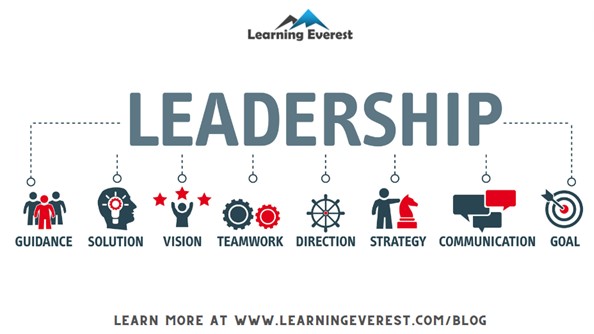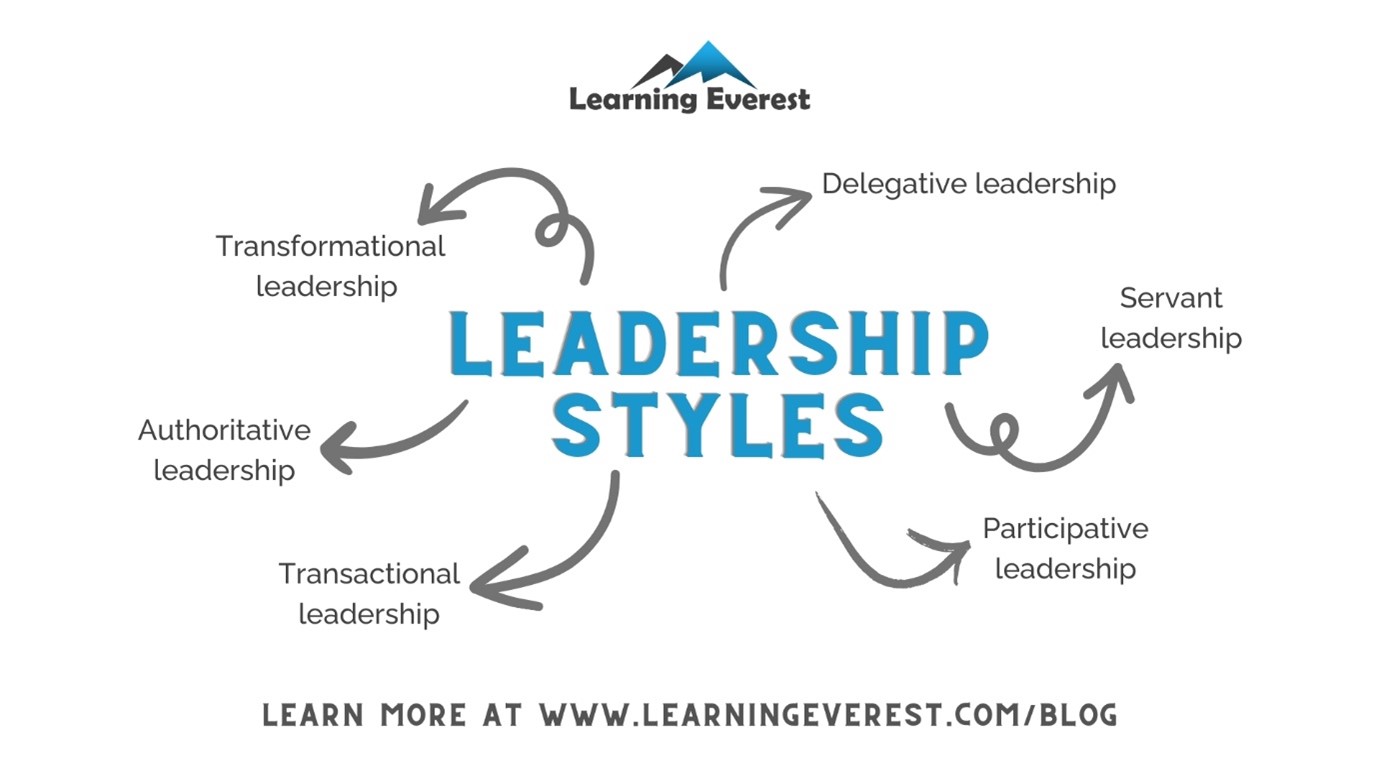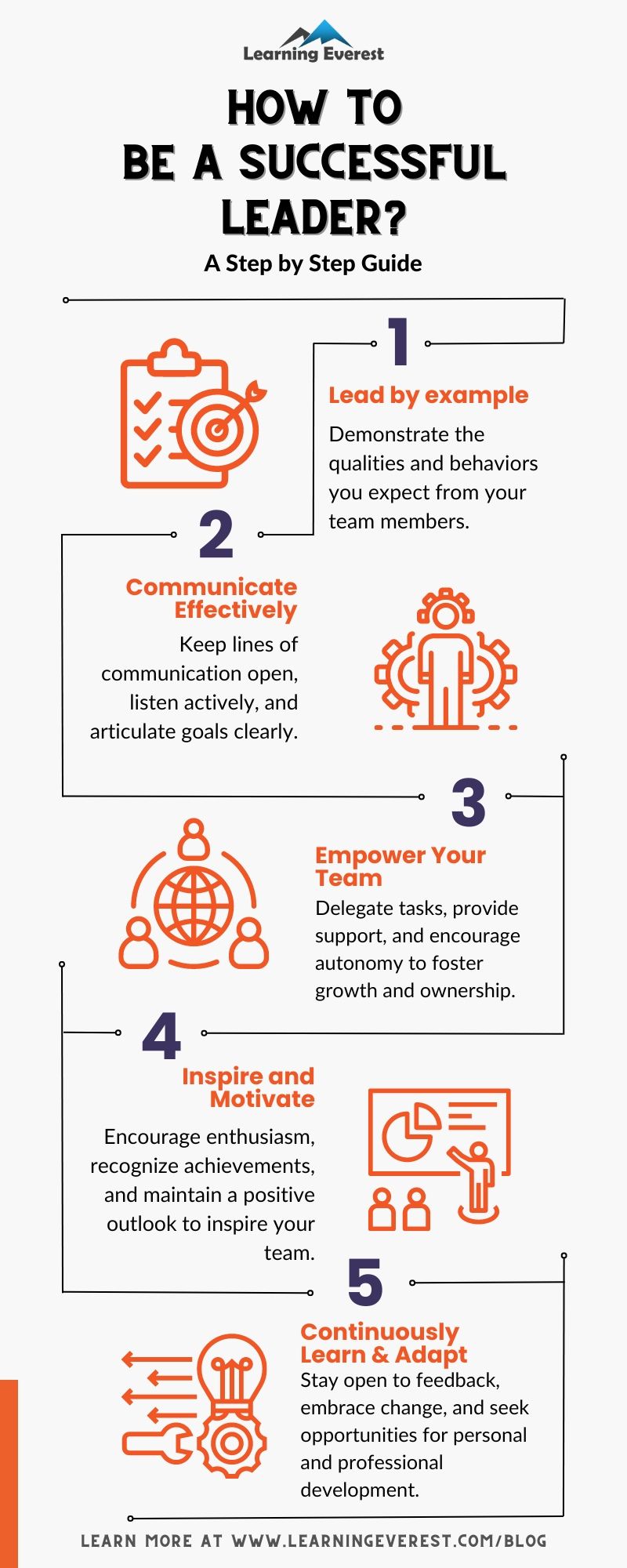This blog will explore the connection between leadership and organizational change and development and discuss how your organizations can use them to reach their goals.
Let’s get started!
Table of Contents
- What is leadership?
- The Different Types of Leadership
- What is organizational change and development?
- The Importance of Organizational Change and Development
- Here are some of the key benefits of leadership and organizational development in the workplace:
- Key aspects of leadership in organizational change and development
- Conclusion
- Infographic
- Knowledge Check!
- Frequently Asked Questions (FAQs)
- What do you mean by leadership?
- What are the different leadership styles?
- What is leadership in organizational change?
What is leadership?
Leadership is the way of leading employees in an organization toward the accomplishment of organizational goals. A leader motivates, inspires, and guides employees to work together to achieve that common goal. Leadership is important to create a sense of direction and purpose. It can foster a sense of unity and collaboration, which improves morale and increases productivity.
Leadership consists of:

The Role of Leadership in Organizational Change and Development
In an organization, effective leadership is also important for healthy productivity. Good leaders can create a vision and a plan to achieve it, and they can communicate this vision to inspire and motivate others to work toward it.
The Different Types of Leadership
Choosing a leadership style that works for you can make you a more effective leader. Whether you have a large or small team, your leadership style heavily influences how your team sees you. Here are a few types of leadership styles:

The Different Types of Leadership
Let’s discuss them in detail!
Transformational leadership
Transformational leadership is a leadership style that highlights change and transformation. Leaders who adopt this method strive to motivate their followers to accomplish more than they ever thought possible by tapping into their potential. This type of leadership can be highly useful in organizations looking to make significant changes or transformations.
Transformational leaders always look ahead and think about what must be done to achieve the organization’s objectives. They are comfortable with change and understand it is necessary for organizational development. They work to ensure their followers are comfortable with change and can adapt to it.
Delegative leadership
Leaders with this style have trust and rely on their employees to do their tasks. They don’t get too involved in providing feedback or guidance. Instead, they allow employees to utilize their own creativity, resources, and experience to help them meet their objectives.
Authoritative leadership
Authoritative leaders are usually referred to as visionary. Leaders who adopt this style consider themselves to be mentors of their followers. They tend to motivate and inspire those around them. They provide overall guidance and provide their teams with direction, feedback, and inspiration. This promotes a sense of accomplishment or achievement.
Transactional leadership
Transactional leadership, also known as managerial leadership, depends on rewards and punishments. This leadership style clearly highlights structure, assuming individuals may not possess the inspiration needed to achieve their missions.
Participative leadership
Also known as democratic leadership, this leadership style motivates leaders to listen to their employees and involve them in the decision-making procedure. This leadership style requires leaders to be inclusive, use good communication skills, and, crucially, be able to share control/responsibility.
Servant leadership
Servant leadership is a leadership style that places the requirements of others first. It highlights building strong relationships with those around you and concentrates on helping them to reach their full potential. A leader requires understanding the people you are working with and developing their abilities while setting a good example and understanding their personal goals.
What is organizational change and development?
Organizational change and development are ways of improving the efficiency and effectiveness of an organization. It can be done through training employees, improving communication, or implementing new systems and processes.

Organizational Change And Development
There are many approaches to organizational development, but all share the goal of improving the organization’s performance. Moreover, organizational change and development is an ongoing process, and it is important for organizations to continually assess and adjust their strategies for the future.
The Importance of Organizational Change and Development
Organizational change is a critical aspect of any organization. It helps leaders to identify areas where the company requires to improve and make changes to bring more efficiency and effectiveness. Moreover, organizational change can help businesses to better adapt to changing market trends and customer demands.
Organizational change is a process that can also be used to improve communication, teamwork, work culture, and overall performance within an organization. It involves analyzing the current circumstances of the organization and making refinement plans. Organizational change may involve training employees on new approaches or improving current processes.
Organizational change is also necessary because it can help an organization to adapt and prosper in a rapidly changing environment. By identifying and addressing any weaknesses or threats, an organization can become more efficient in attaining its goals. It can also help improve the employees’ skills and capacities within the organization, leading to increased productivity and success. Therefore, we can fairly say that organizational change and development is a process that should be used regularly to keep a business running smoothly.
The importance of leadership in organizational change and development in the workplace
Leadership and organizational development are important in today’s rapidly changing business environment. Organizations are encountering unprecedented challenges, such as global competition, constantly growing technology, and the need to meet customers’ ever-changing demands. Leaders must adapt quickly and effectively to change to thrive in this environment. Organizational change and development can provide the tools and resources needed to support leaders in fulfilling these challenges.
Here are some of the key benefits of leadership and organizational development in the workplace:
To establish direction and vision
First and foremost, effective leadership is important for setting the direction and goal of the organization. Strong leaders can communicate the organization’s mission and goals and ensure all employees understand and work towards the same objectives. This helps create a sense of purpose for the organization, increasing employee engagement and motivation.
Make strategic decisions
Leaders with strong abilities can comprehend intricate details and take well-informed actions for the organization’s sake. They can anticipate potential threats and opportunities and make prior plans to overcome them. It helps to ensure that the organization is always moving ahead and adapting to changes according to industry standards.
Improve employee motivation and engagement
A strong leader can inspire and motivate employees by clearly communicating their vision and recognizing and rewarding them for their contributions. They foster a positive and encouraging work culture where employees are appreciated. It helps get employees more involved and keeps them around, which greatly affects how well the organization performs.
Build a strong organizational culture
A good leader helps foster a positive, inclusive, and supportive environment by providing guidance and direction. This helps foster a sense of community among employees, increasing cooperation and productivity. Moreover, a strong organizational culture helps attract and retain top talent, positively impacting the organization’s long-term success.
Promote change and growth
Leadership development is essential to developing skills in leaders for managing change and growth. Strong leaders can lead the organization through the changes and ensure that the organization remains competitive and relevant. They also manage growth and expansion and make sure that the organization can scale up and meet the needs of a growing customer base.
As organizations move towards a more effective operation model, the importance of leadership and organizational development cannot be overemphasized. Leaders can facilitate improved organizational performance by working together to create winning strategies that foster innovation, empower employees, and increase efficiency.
Key aspects of leadership in organizational change and development
Now, there are a few challenges in the way. Challenges in leadership during organizational change and development include resistance, uncertainty, and the potential for employee disengagement. Effective leaders navigate these challenges using the following:
- Clear communication: Leaders must communicate transparently and consistently, keeping employees informed about the reasons for change, the expected outcomes, and how it aligns with the organization’s overall strategy.
- Empathy and emotional intelligence: Understanding the concerns and emotions of employees is crucial. Empathetic leaders acknowledge the impact of change on individuals and demonstrate emotional intelligence in managing reactions and resistance.
- Adaptability: Leaders must be flexible and adaptable, adjusting strategies based on feedback and changing circumstances. They should model the adaptability they expect from their teams.
- Inclusive decision-making: Involving employees in decision-making fosters a sense of ownership and commitment. Leaders should seek input from various levels of the organization, valuing diverse perspectives.
- Risk-taking and innovation: Encouraging a culture of innovation and risk-taking is essential for navigating change. Leaders should create an environment where employees feel empowered to suggest and implement creative solutions.
- Support and resources: Providing the necessary resources, training, and support is vital. Leaders should ensure employees have the tools and knowledge to succeed in the new environment.
- Monitoring progress: Effective leaders establish key performance indicators and regularly monitor progress. This enables them to make informed decisions, address challenges promptly, and celebrate achievements.
Conclusion
To sum up, leadership in organizational change and development is an important component of any successful business. The right ability to lead effectively, inspire and motivate the employees, create a positive work culture, and develop the right changing organizational strategies are essential for companies to succeed in today’s competitive environment.
Infographic
Knowledge Check!
Frequently Asked Questions (FAQs)
What do you mean by leadership?
Leadership is the way of leading employees in an organization toward the accomplishment of organizational goals.
What are the different leadership styles?
The different leadership styles are transformational leadership, delegative leadership, authoritative leadership, transactional leadership, participative leadership, and servant leadership.
What is leadership in organizational change?
Effective leaders navigate organizational challenges using clear communication, empathy and emotional intelligence, adaptability, inclusive decision-making, risk-taking and innovation, support and resources, and monitoring progress.






